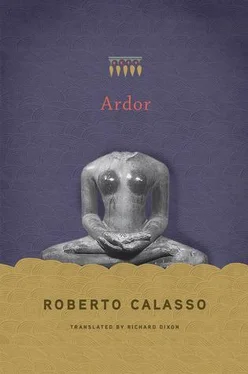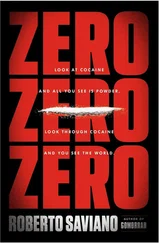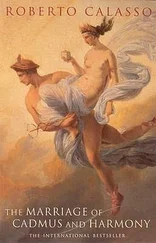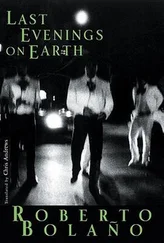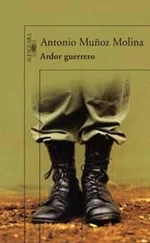If one wants to talk about anything religious, some kind of relation has to be established with the invisible. There has to be a recognition of powers situated over and beyond social order. Social order itself must seek to establish some relations with that invisible. All this does not seem to be of great concern to religious authorities at the beginning of the twenty-first century. In the higher ranks of Christian or Islamic hierarchies, or among the pandits of Hinduism, it is easy to find keen sociologists or social engineers who use the sacred names of their respective traditions to impose or sustain a certain collective order. But it would be hard to find anyone who could speak the language of Meister Eckhart or Ibn ‘Arabī or Yājñavalkya — or could even remind us of such a voice.
In the face of this, the Śatapatha Brāhmaṇa offers the picture of a world made up only of what is religious, with no apparent curiosity or concern about anything that is not. As the Brāhmaṇas see it, the religious pervades every tiny gesture — and even pervades all that is involuntary and accidental. For Vedic ritualists, a world without such characteristics would have appeared meaningless, in exactly the same way as their writings have often appeared to readers of today. The incompatibility between the two views is total. And the disparity of forces is overwhelming: on the one hand a chain of procedures that has succeeded in covering the entire planet for the first time with an invisible digital network; on the other hand a body of texts, partly accessible only in a dead, perfect language, which describes actions and entities that seem no longer to have any importance. Yet the thinking of the Vedic ritualists, in its sometimes unfathomable eccentricity, had this peculiarity: it always posed crucial questions, in the face of which all thinking going back to the Enlightenment shows itself to be clumsy and inadequate. The ritualists did not offer solutions, but they knew how to isolate and contemplate the knots that cannot be undone. It is by no means certain that thought can do much more.
* * *
It would be pleonastic to use the word symbol in a world where multiple meanings could be found in every tiny fragment. What, for example, would water be a symbol of in the Veda, other than — almost — everything? To apply the Western notion of “symbol” to the Vedic world would rapidly produce a general state of meaninglessness through an excess of meaning. Indeed there is no exact word in Sanskrit for “symbol.” Bandhu, nidāna, sampad : these are words that indicate an affinity, tie, bond, correspondence, nexus, assimilation, but cannot be reduced to official functions, as happened in the case of the symbol.
In the ordinary Western mind, as it has developed over centuries of elaboration before producing hordes of anonymous Bouvards and Pécuchets, it is generally assumed to be quite unnecessary for the vast majority of things to be a symbol of something else, except in certain clear-cut cases where such a role is considered legitimate — and also useful. The flag is a good example. But the Vedic world would then be a boundless expanse of flags.
At the same time, a modern Western mind is able to navigate the Vedic texts, though with some difficulty — finding itself at times before obstacles that seem insurmountable — and discover something vital that can be found nowhere else. And the difficulties it encounters are not that much greater than those that a present-day Indian has to face. The distance between Indian and Western cultures of today, though obviously great, becomes negligible when compared with the astral distance of both from the Vedic world.
How does contact become possible? Analogically. In the silent plains of the past, the Veda is most probably the widest, most complex, most ramified area, where people lived granting sovereignty and preeminence to only one pole of the mind: the analogical pole. A pole that works perpetually (and cannot fail to work) in every being, at whatever time, in the same way as its corresponding pole: the digital pole. Under whose dominion the entire world now finds itself living — an experimental condition that is unprecedented. But, though the preeminence of the digital pole is solid and secure, this does not mean the analogical pole is disappearing. And in fact it has no option but to continue working, since physiology demands that it does. Yet at times it works secretly, or in disguise, or at least without letting itself be noticed. On the other hand, digitality was also present and active in the Vedic world, though bridled and trampled upon. And it cannot be otherwise, since this is how our brain and our nervous system are made. This implies, among other things, that nothing can in principle stop them from trying to act and react in ways they once used to, over several millennia. On the scale of the brain, those times are not even so very far distant.
Behind the Ṛgveda , behind the swarming of gods, behind the seers who saw the hymns, behind the ritual acts, we glimpse something that could approximately be called Vedic thought. If this thinking was the most hazardous and consistent attempt at ordering life in obedience to the analogical method alone, that attempt could not last — and we can only be amazed that it has managed to survive in particular places and particular periods, like a wedge of alien material. Yet it is also true that this attempt, vulnerable though it might have been, has also had the strength to keep some of its features alive over a distance of millennia, when other grandiose constructions had sunk. In Greece today, its gods and their rituals speak only through the silence of their stones. The same is true for Egypt, the most hoary of civilizations. But the Vedic mantras continue to be recited and sung, intact, sometimes in the same places where they were formed — or even in Kerala. And particular ritual gestures, to which Vedic thought had devoted obsessive attention, continue to be carried out in the saṃskāra , in the sacramental ceremonies that are part of countless lives in India.
* * *
The gods dwell where they have always dwelt. But on earth, certain indications about those places have now been lost. Or we no longer know where to find them among old sheets abandoned and dispersed. Meanwhile, life goes on as if nothing had happened. Some think those sheets will one day be rediscovered. Others that they were of no particular importance. Others, yet again, have no idea they ever existed.
* * *
Humanity does not have a superabundance of modes of thinking. And two— connective and substitutive thinking — stand out like inimical brothers. Each is based on a statement: “ a is connected to b ” and “ a stands for b ” (where “ a implies b ” is a subset of “ a is connected to b ”). There is no form of thought that cannot be subsumed into one or other of these two statements. And they are in a relation of chronological succession, because the connective has always preceded the substitutive in every place or time, if we take connective as referring to the Vedic bandhus , and therefore to those “bonds” and “nexuses” that link the most disparate phenomena by affinity, resemblance, and analogy.
The more mature thought is — in the sense of it being multifaceted, all-embracing, precise — the more it practices both of its modes to the very end, to the full extent of their potential. To choose one or the other, as if they were two political parties, would be puerile. But it is essential to distinguish their respective fields of application. Neither the connective nor the substitutive have the capacity to extend to everything. In certain spheres, they become vacuous and inert. The more subtle and effective the activity of one of the modes of thinking becomes, the more it can identify and accurately delineate the areas to which it applies.
Читать дальше
